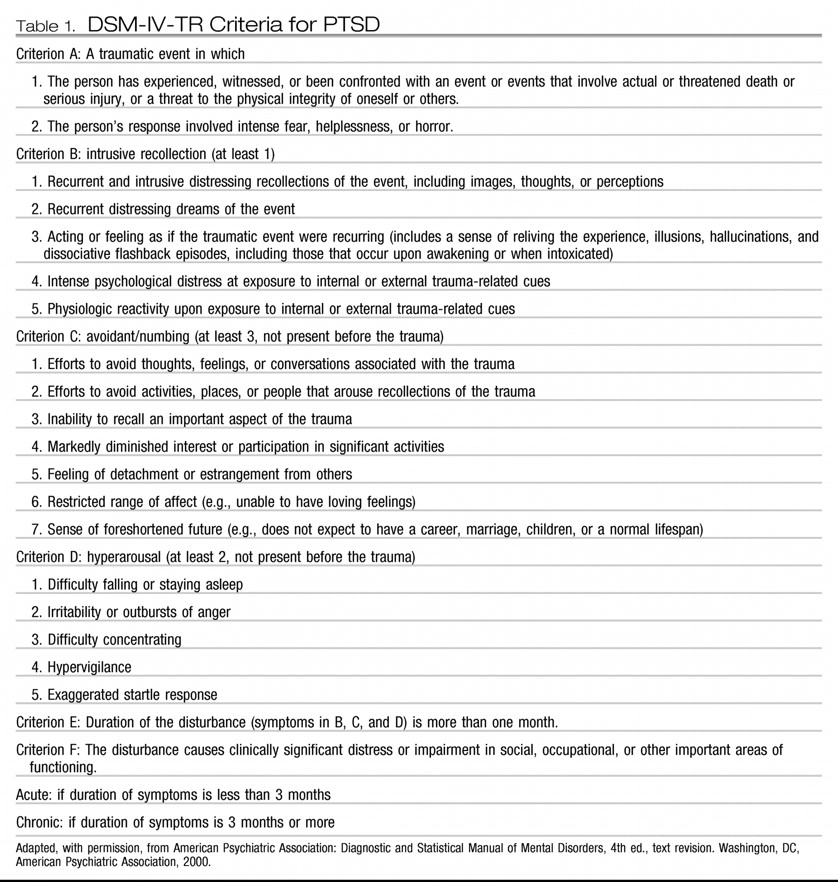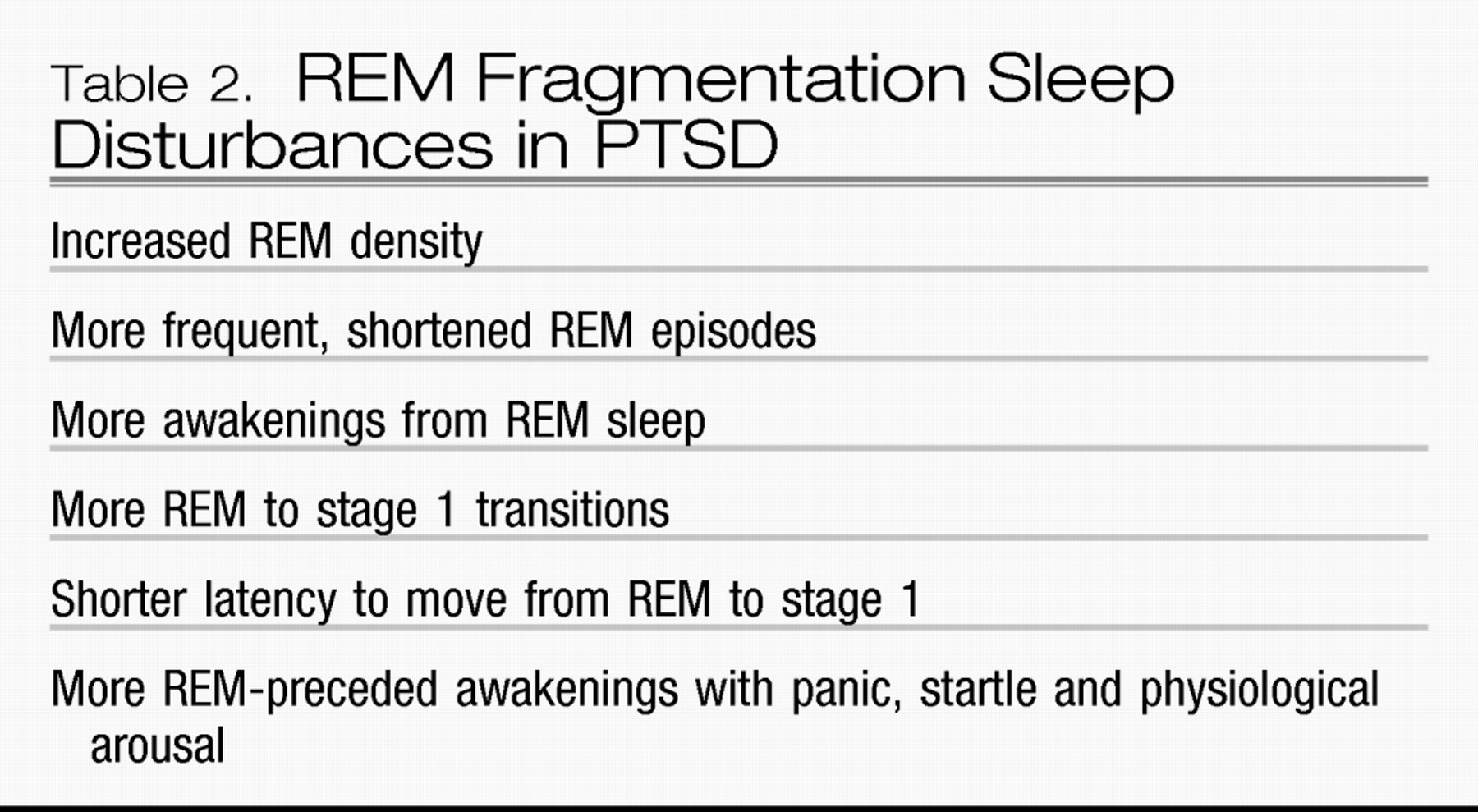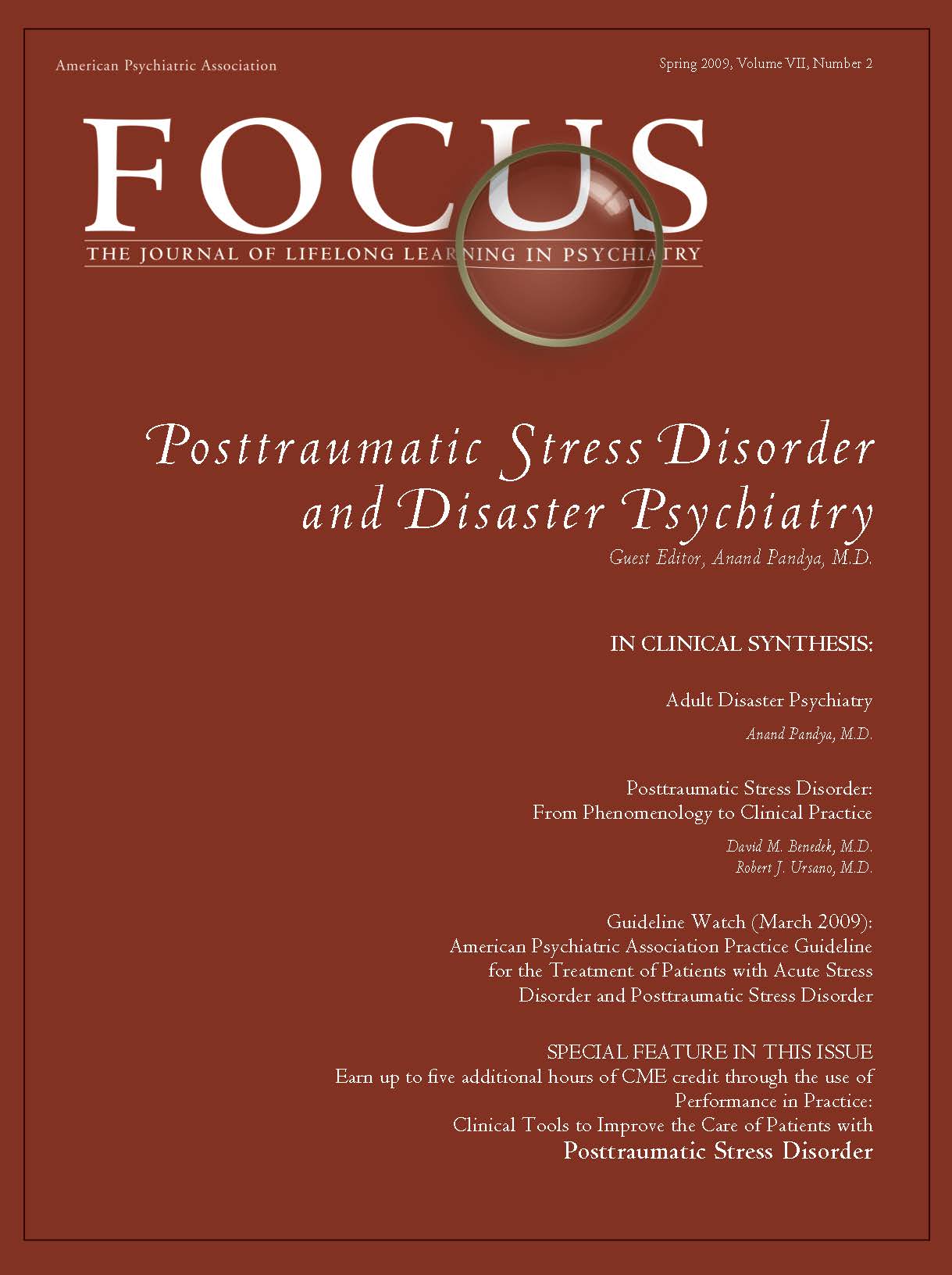Clinical Importance of Sleep Disturbance as a Treatment Target in PTSD
Abstract
CLINICAL CONTEXT: SLEEP DISTURBANCE AS A CORE SYMPTOM IN PTSD



TREATMENT STRATEGIES AND EVIDENCE
DO FIRST-LINE TREATMENTS FOR PTSD EFFECTIVELY TREAT SLEEP DISTURBANCE?
NEUROBIOLOGICAL SUBSTRATES OF PTSD RELEVANT TO SLEEP DISTURBANCE
POLYSOMNOGRAPHY IN PTSD
Nightmares in PTSD.
REM sleep disruption in PTSD.
PERIODIC LIMB MOVEMENTS IN PTSD
SDB in PTSD.
QUESTIONS AND CONTROVERSY: IS REM DYSREGULATION A MODEL FOR SLEEP DISTURBANCE IN PTSD?

RECOMMENDATIONS: IMPLICATIONS FOR TREATMENT SLEEP DISTURBANCE IN PTSD
PRAZOSIN
OTHER ANTIADRENERGIC AGENTS
GABAPENTIN
SUMMARY
REFERENCES
Information & Authors
Information
Published In
History
Authors
Funding Information
Metrics & Citations
Metrics
Citations
Export Citations
If you have the appropriate software installed, you can download article citation data to the citation manager of your choice. Simply select your manager software from the list below and click Download.
For more information or tips please see 'Downloading to a citation manager' in the Help menu.
View Options
View options
PDF/EPUB
View PDF/EPUBGet Access
Login options
Already a subscriber? Access your subscription through your login credentials or your institution for full access to this article.
Personal login Institutional Login Open Athens loginNot a subscriber?
PsychiatryOnline subscription options offer access to the DSM-5-TR® library, books, journals, CME, and patient resources. This all-in-one virtual library provides psychiatrists and mental health professionals with key resources for diagnosis, treatment, research, and professional development.
Need more help? PsychiatryOnline Customer Service may be reached by emailing [email protected] or by calling 800-368-5777 (in the U.S.) or 703-907-7322 (outside the U.S.).

